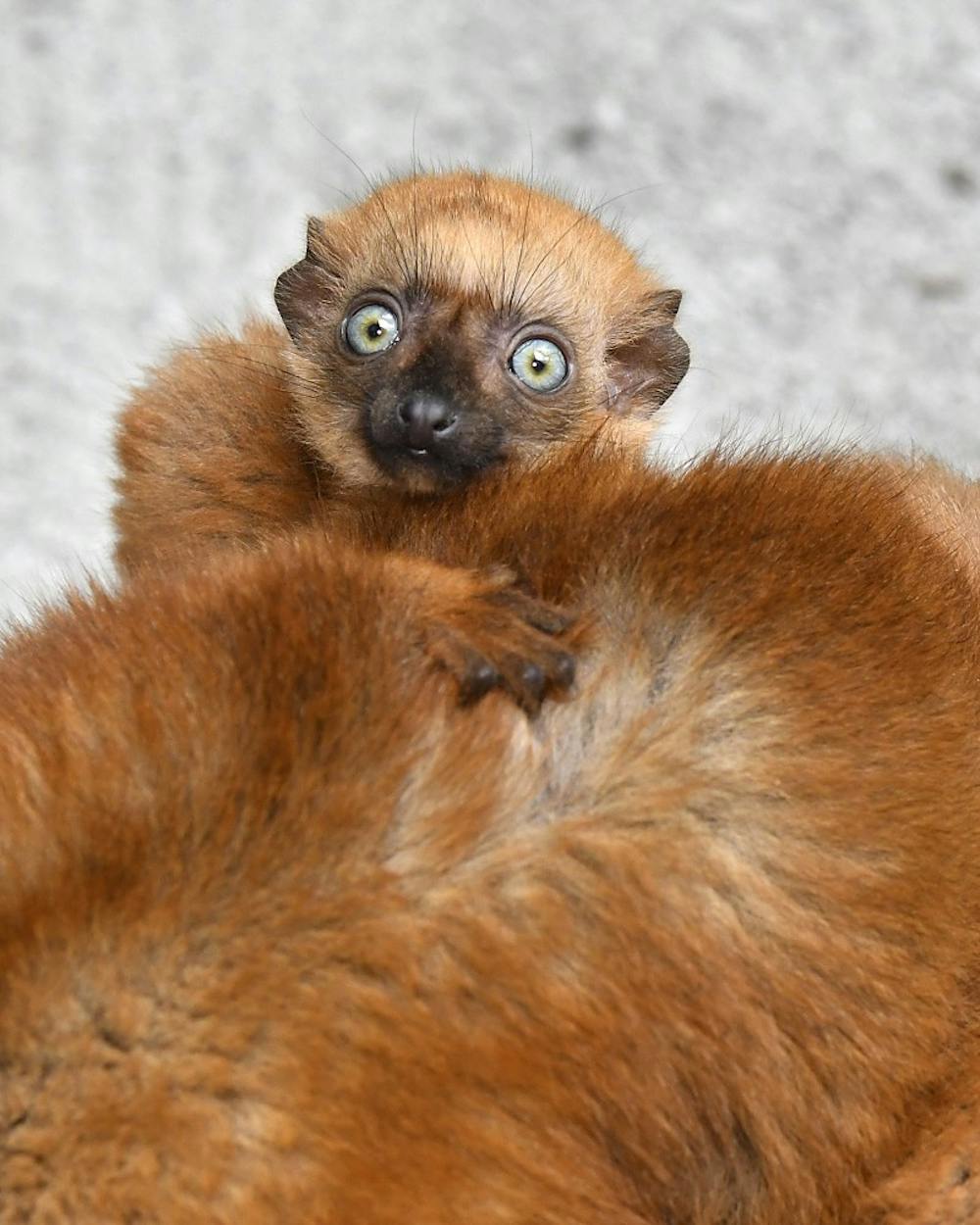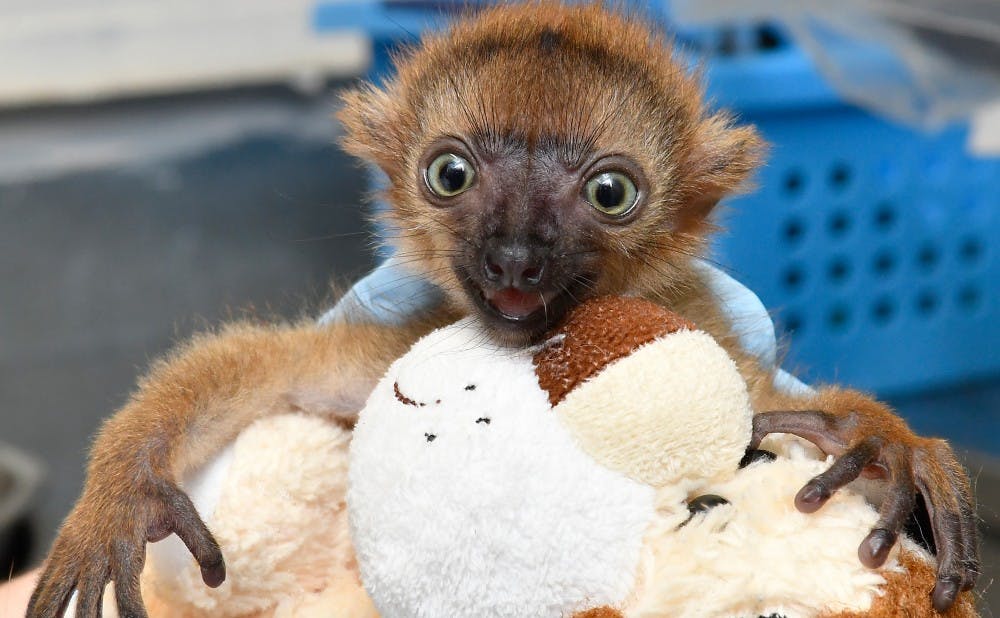It has been an active 2018 for the Duke Lemur Center, which just added another member to its family—Ranomasina.
The newborn lemur, whose name means "sea" in Malagasy—the national language of Madagascar—is just one of 34 living blue-eyed black lemurs in North America, which is also one of the 25 most endangered primates on Earth. Ranomasina was the third blue-eyed black lemur born this season at the center when she was delivered by cesarean section April 12 and weighed just less than three ounces, according to a press release from the Center.
“This is not just any baby,” said Bobby Schopler, a veterinarian at the Lemur Center, according to the release. “This is the most important birth in the 13 years I’ve worked here. She was born to a pair that took us three years to bring to Durham from Madagascar, and we may never be able to import anymore.”
Ranomasina is also extraordinary in that she was born via C-section—a surgery that has been used just 15 times in the Lemur Center's 50-year history.
Because Ranomasina is so important to the species' survival, veterinarians at the Lemur Center opted to perform the C-section to avoid the risk of a "difficult—and potentially fatal—birth," according to the release.
Less than one thousand blue-eyed black lemurs remain in the wild today—and one recent estimate said that the species could vanish entirely by the end of the next decade.

Get The Chronicle straight to your inbox
Signup for our weekly newsletter. Cancel at any time.

Managing Editor 2018-19, 2019-2020 Features & Investigations Editor
A member of the class of 2020 hailing from San Mateo, Calif., Ben is The Chronicle's Towerview Editor and Investigations Editor. Outside of the Chronicle, he is a public policy major working towards a journalism certificate, has interned at the Tampa Bay Times and NBC News and frequents Pitchforks.

